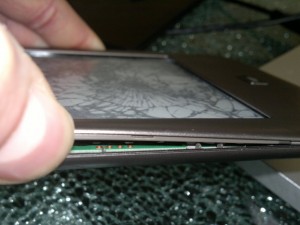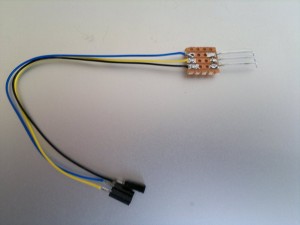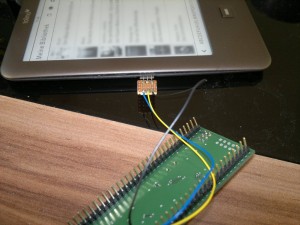Increase MSP432™ SPI Performance – Part 2
Ok, here it is, the Fill function written in assembler.
Due some caching of hardware register addresses in the Core registers, I was able to reduce the following code from 8+ steps to 4.
UCB2TXBUF = data; while (UCB2STATW & UCBUSY);
The following assembler source is the first full standalone assembler code I wrote. Don’t be mad at me!
ILICTL_POUT .word 0x40004C42 ; P5OUT ILIUCI_TXBUF .word 0x4000280E ; UCB2TXBUF ILIUCI_STATW .word 0x40002808 ; UCB2STATW ILI9341_RAMWR .set 0x2c ILICTL_DCX .set 0x0004 UCBUSY .set 0x0001 ;############################################################################################ ; extern void ILI9341_FillASM(uint16_t color, uint32_t count32); .global ILI9341_FillASM ILI9341_FillASM: .asmfunc Color .set r0 ; r0 = Color ; Param 0 Count .set r1 ; r1 = Count ; Param 1 TXBUF .set r2 ; r2 = ILIUCI_TXBUF STATW .set r3 ; r3 = ILIUCI_STATW POUT .set r4 ; r4 = ILICTL_POUT ColorH .set r5 ; r5 = Color >> 8 Slow .set r6 ; r6 = Count & 0x0007 Buffer .set r7 push {r4-r7} ; cache hardware register addresses ldr TXBUF, ILIUCI_TXBUF ldr STATW, ILIUCI_STATW ldr POUT, ILICTL_POUT ; ILI_COMMAND ldrb Buffer, [POUT] bic Buffer, Buffer, #ILICTL_DCX strb Buffer, [POUT] ; transmit ramwr byte mov Buffer, #ILI9341_RAMWR strb Buffer, [TXBUF] RAMWR_Busy_L: ; wait until transmit ldrb Buffer, [STATW] tst Buffer, #UCBUSY bne RAMWR_Busy_L ; ILI_DATA ldrb Buffer, [POUT] orr Buffer, Buffer, #ILICTL_DCX strb Buffer, [POUT] lsr ColorH, Color, #8 ; Color >> 8 ands Slow, Count, #0x0007 ; Test if lower bits of count is set beq Fast Slow_L: ; Slow data loop strb ColorH, [TXBUF] ; Color H Slow_Busy_L0: ; wait until transmit ldrb Buffer, [STATW] tst Buffer, #UCBUSY bne Slow_Busy_L0 strb Color, [TXBUF] ; Color L Slow_Busy_L1: ; wait until transmit ldrb Buffer, [STATW] tst Buffer, #UCBUSY bne Slow_Busy_L1 subs Slow, Slow, #1 bne Slow_L ; continue while slow data Fast: ; Fast data lsrs Count, Count, #3 ; count >> 3 beq End ; if count = 0, goto end Fast_L: ; fast data loop ; ----------------- Data 0 ----------------- strb ColorH, [TXBUF] ; Color H Fast_Busy_L0: ; wait until transmit ldrb Buffer, [STATW] tst Buffer, #UCBUSY bne Fast_Busy_L0 strb Color, [TXBUF] ; Color L Fast_Busy_L1: ; wait until transmit ldrb Buffer, [STATW] tst Buffer, #UCBUSY bne Fast_Busy_L1 ; ----------------- Data 1 ----------------- strb ColorH, [TXBUF] ; Color H Fast_Busy_L2: ; wait until transmit ldrb Buffer, [STATW] tst Buffer, #UCBUSY bne Fast_Busy_L2 strb Color, [TXBUF] ; Color L Fast_Busy_L3: ; wait until transmit ldrb Buffer, [STATW] tst Buffer, #UCBUSY bne Fast_Busy_L3 ; ----------------- Data 2 ----------------- strb ColorH, [TXBUF] ; Color H Fast_Busy_L4: ; wait until transmit ldrb Buffer, [STATW] tst Buffer, #UCBUSY bne Fast_Busy_L4 strb Color, [TXBUF] ; Color L Fast_Busy_L5: ; wait until transmit ldrb Buffer, [STATW] tst Buffer, #UCBUSY bne Fast_Busy_L5 ; ----------------- Data 3 ----------------- strb ColorH, [TXBUF] ; Color H Fast_Busy_L6: ; wait until transmit ldrb Buffer, [STATW] tst Buffer, #UCBUSY bne Fast_Busy_L6 strb Color, [TXBUF] ; Color L Fast_Busy_L7: ; wait until transmit ldrb Buffer, [STATW] tst Buffer, #UCBUSY bne Fast_Busy_L7 ; ----------------- Data 4 ----------------- strb ColorH, [TXBUF] ; Color H Fast_Busy_L8: ; wait until transmit ldrb Buffer, [STATW] tst Buffer, #UCBUSY bne Fast_Busy_L8 strb Color, [TXBUF] ; Color L Fast_Busy_L9: ; wait until transmit ldrb Buffer, [STATW] tst Buffer, #UCBUSY bne Fast_Busy_L9 ; ----------------- Data 5 ----------------- strb ColorH, [TXBUF] ; Color H Fast_Busy_L10: ; wait until transmit ldrb Buffer, [STATW] tst Buffer, #UCBUSY bne Fast_Busy_L10 strb Color, [TXBUF] ; Color L Fast_Busy_L11: ; wait until transmit ldrb Buffer, [STATW] tst Buffer, #UCBUSY bne Fast_Busy_L11 ; ----------------- Data 6 ----------------- strb ColorH, [TXBUF] ; Color H Fast_Busy_L12: ; wait until transmit ldrb Buffer, [STATW] tst Buffer, #UCBUSY bne Fast_Busy_L12 strb Color, [TXBUF] ; Color L Fast_Busy_L13: ; wait until transmit ldrb Buffer, [STATW] tst Buffer, #UCBUSY bne Fast_Busy_L13 ; ----------------- Data 7 ----------------- strb ColorH, [TXBUF] ; Color H Fast_Busy_L14: ; wait until transmit ldrb Buffer, [STATW] tst Buffer, #UCBUSY bne Fast_Busy_L14 strb Color, [TXBUF] ; Color L Fast_Busy_L15: ; wait until transmit ldrb Buffer, [STATW] tst Buffer, #UCBUSY bne Fast_Busy_L15 subs Count, Count, #1 bne Fast_L ; continue while fast data End: pop {r4-r7} bx lr .endasmfunc



